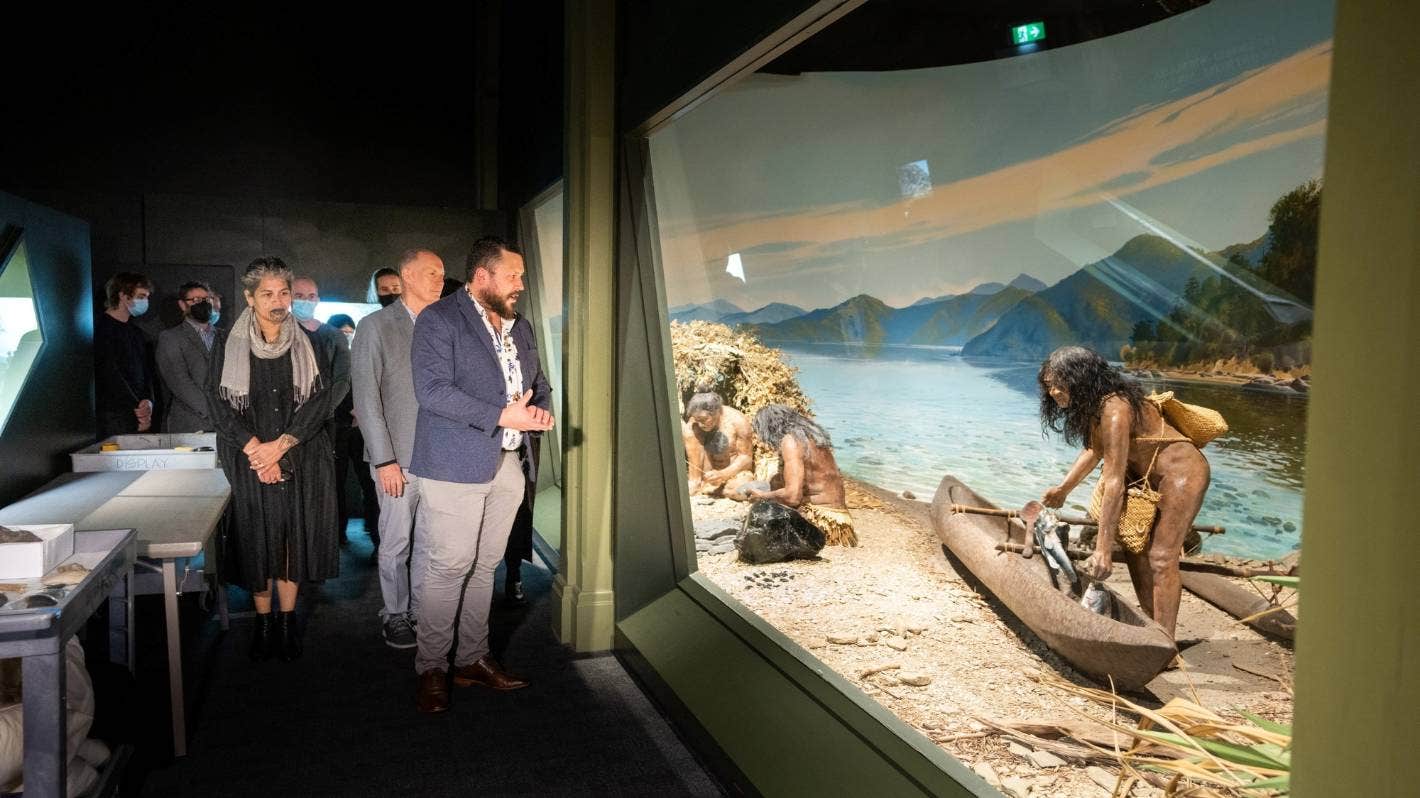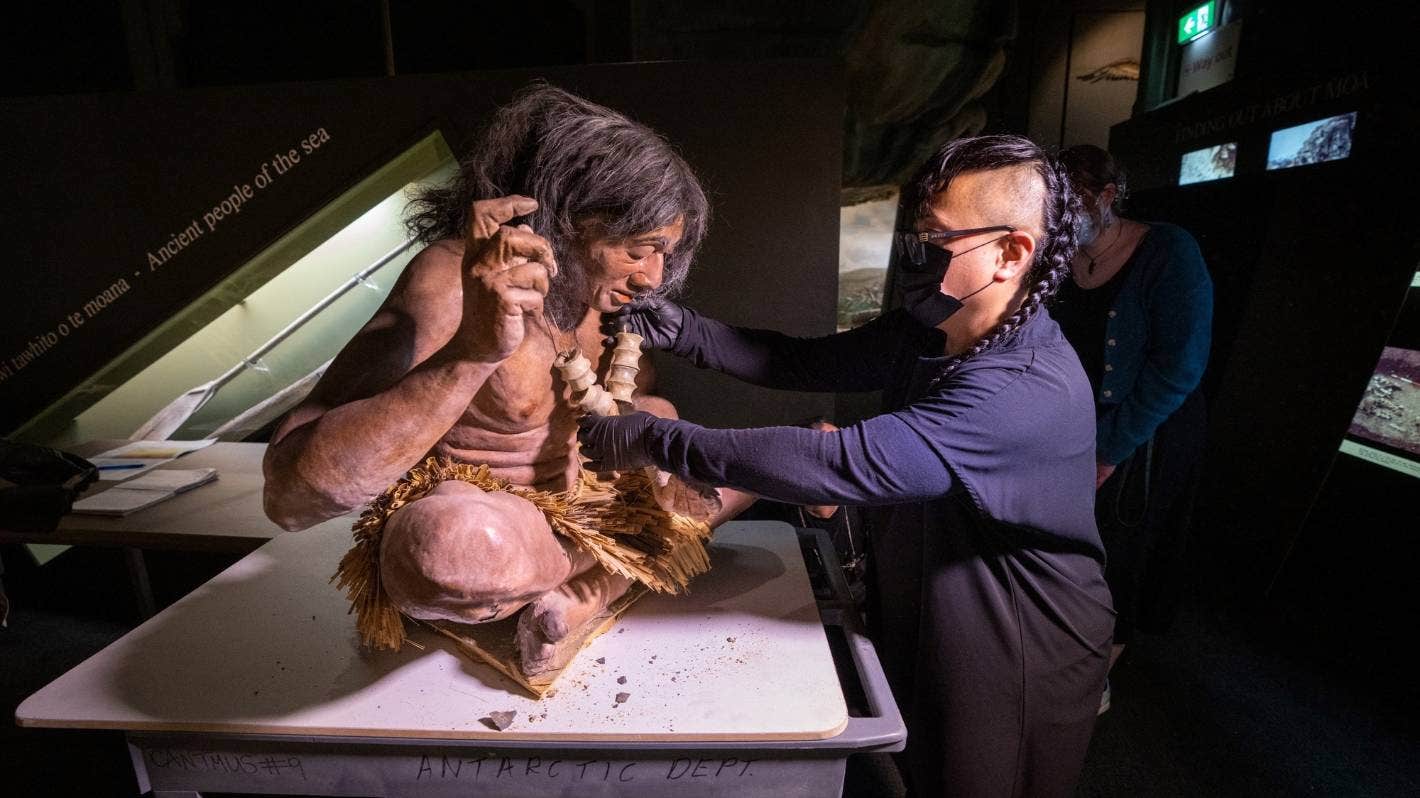Museum drops inaccurate mannequins depicting Māori / Supplied
"Offensive and inaccurate" mannequins depicting early Māori have been removed from Canterbury Museum, 17 years after a board member first lobbied to have them dumped.
“Their state of nudity is inaccurate, the way their hair is placed, their facial features, there’s a lot that is wrong with how they've been represented, their stances even,” Hatesa Seumanutafa, the museum’s associate curator for Māori and Pasifika said as the statues were taken down during a ceremony involving Ngāi Tahu, yesterday.
The mannequins were installed in the 1980s based on what was said to be archaeological research, but subsequent researchers have called them out as offensive.

Ngāi Tahu and museum leaders at a service to remove the offensive and inaccurate mannequins first installed in the 1980s and complained about as early as 2005. / Supplied
All 10 had been partially covered up for the last two years while the museum prepared for a refurbishment, where they'd be dropped, but earlier this year Race Relations Commissioner Meng Foon called for urgent action to remove them.
Te Rūnanga o Ngāi Tahu and Museum board member Puamiria Parata-Goodall said the removal was emotional given many people, including former board member Dave Brennan (Ngāi Tahu), tried to get rid of them as far back as 2005.
“This was part of our healing to have this opportunity to remove the mannequins and to start to rebalance that narrative from an iwi perspective,” Parata-Goodall said.
Ngāi Tahu has a better, "more trusting" relationship that boded well for the future, Parata-Goodall said.

Canterbury Museum has removed mannequins inaccurately depicting Māori in the lead-up to an overhaul that will see mana whenua partner with the museum to accurately depict Māori / Supplied
Museum chair David Ayers said mana whenua had been listened to, conceding the mannequins were "offensive and inaccurate depictions" which had no place in the museum.
"We acknowledge it has taken time to come to this decision and we appreciate everyone’s patience,” he said.
Representatives of Ngāi Tūāhuriri and local Papatipu Rūnanga will work with Canterbury Museum staff to develop Araiteuru, an area in the newly redeveloped museum where mana whenua will tell their stories using taonga the museum cares for in partnership.
“The redevelopment of the museum provides us with a unique opportunity to revisit how we tell the stories of this place and the people who live here,” museum director Anthony Wright said.
“Mana whenua and the Papatipu Rūnanga will lead the telling of their stories to help shape the visitor experience so it appropriately reflects the history of Aotearoa and the stories that connect and bind us.”
Ayers acknowledged the dioramas presented a colonial view of Māori in Te Waipounamu and the figures' removal acknowledged that.
“We are happy this issue has been resolved,” Puamiria Parata-Goodall said.
“Our sights are now set on the opportunities the redevelopment project offers our region and communities to come together and create a museum that speaks to all of us.”

